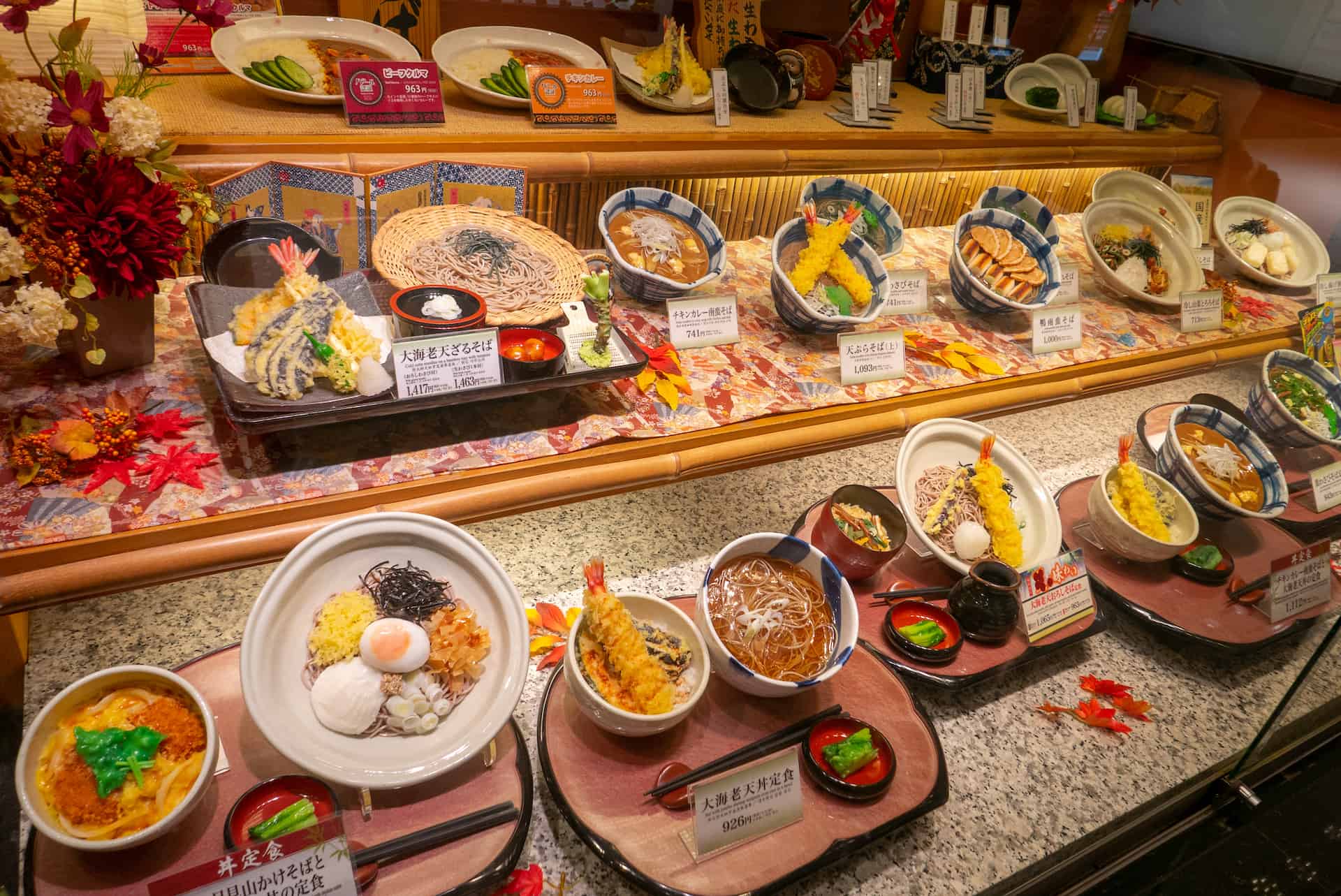When it comes to food, Japanese culture takes preparation very seriously. But one of the most eye-catching, intricate and expensive food practices in Japan is so devoted to preparation that the dishes never actually get eaten. No, it’s not a Michelin star-rated omakase — it’s shokuhin sampuru, the creation of plastic replicas of traditional Japanese dishes.
Used to tempt customers or help foreign tourists navigate a Japanese menu, these food samples balance realism with aesthetics in order to create the most enticing dishes for potential customers. Popular since the mid-twentieth century, the plastic food industry has spread all over Japan and is now a $90 million business.
Molding the origin story
Artisans have been creating food models since the 1920s, but the pioneer of the modern process was Takizo Iwasaki. Inspired by the shapes of melting candle wax, Iwasaki supposedly created an omelet out of wax that was so detailed it fooled his wife into thinking it was real. Iwasaki opened a workshop in his hometown of Gujo Hachiman, three hours west of Tokyo, and once the model appeared in a department store in Osaka in 1932, the food model craze took off.
Other than being unique, colorful and cute, no one is completely sure why the plastic food trend became so universal in Japanese restaurants. One theory is that the demand for food models developed during and immediately following World War II, as restaurant menus diversified with western dishes. Being able to see exactly what menu items looked like put customers at ease, helping servicemen, international travelers and Japanese diners discover new foods and order with confidence.
The art of plastic food
Today, food samples are made of plastic, not wax. Artists create silicon cast molds, fill the mold with liquid PVC plastics and meticulously airbrush each hardened piece (everything is hand painted, down to the last grain of rice). The painting step is crucial: Because the appearance of foods like ramen and sushi vary so much from shop to shop, it’s very important that food models are created on an individual basis.
But this level of detail comes at a price — and one that’s much higher than the actual dishes they represent. On average, a dish like a bowl of ramen, for example, can cost around $100, while a complicated tray of sushi can be closer to $500. That means that a restaurant can spend thousands of dollars on a single display.
Models everyone can buy
Though most shokuhin sampuru are designed for restaurant use, the food samples make quirky souvenirs for visitors. To pick out a few pieces to bring home or present as gifts, head over to Tokyo’s Asakusa neighborhood and go to Kappabashi Street, a commercial retail district that’s specifically for the restaurant and catering trade.
Often referred to as “Kitchen Town,” Kappabashi is one of Tokyo’s biggest wholesale streets, lined with more than 170 shops stocked with kitchen goods for professionals, home cooks and tourists alike. (Travelers will know they’re in the right place when they spot the towering 39-foot statue of a chef’s head, complete with thick mustache and chef’s hat.)
Whether shoppers are looking for handmade knives, artisanal pottery, bento boxes or specific kitchen instruments, a store on Kappabashi Street is likely to have it in stock. To purchase high-quality plastic food samples, check out Maizura, one of the original producers of sampuru. The company has been creating food molds since 1948, when it moved to Tokyo from Osaka. Today, 70% of the brand’s business comes from restaurants, but shoppers can also buy the faux food in its store. Dishes like ramen, soba, spaghetti and pizza are more expensive, around $70, but travelers can also find smaller items, like sushi magnets, phone cases and bookmarks, for less than $20.
Most Japanese cuisine, like sushi, is designed to be eaten within minutes of serving, but shokuhin sampuru allows travelers to experience Japanese food with a longer shelf life. While planning a trip to Tokyo, save time to head to Kappabashi Street to check out the impressive display of this quirky tradition.

